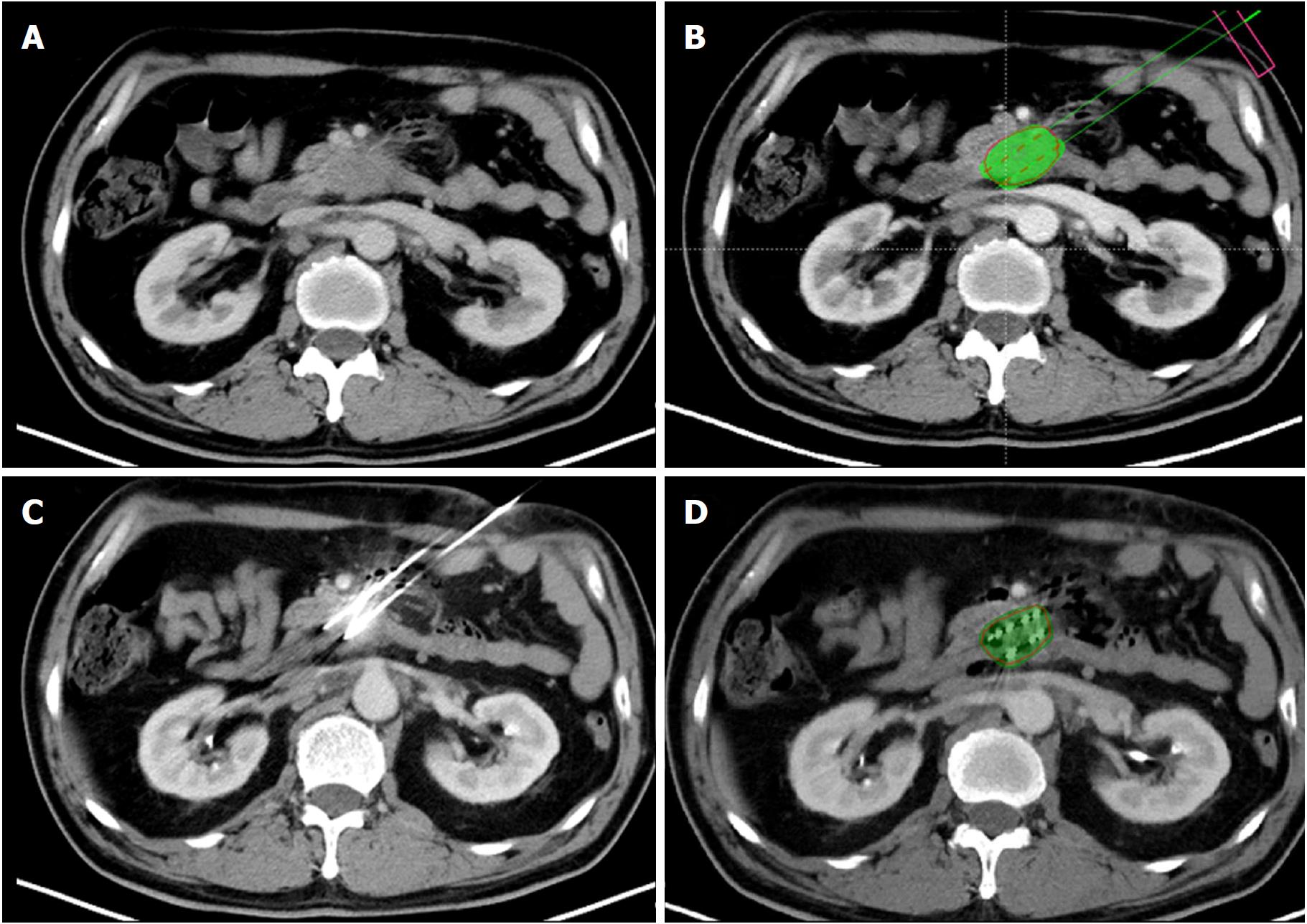Copyright
©The Author(s) 2018.
World J Gastroenterol. Dec 14, 2018; 24(46): 5280-5287
Published online Dec 14, 2018. doi: 10.3748/wjg.v24.i46.5280
Published online Dec 14, 2018. doi: 10.3748/wjg.v24.i46.5280
Figure 1 3D-printed coplanar template appearance.
A: A 3D-printed coplanar template was located on the patient’s skin at the entry point. The implantation needles were inserted into the lesions through the puncture holes. B: The computed tomography manifestation of the 3D-printed coplanar template (arrowhead). C: The position of the implantation needles (arrowhead) and iodine-125 seeds (arrow)
Figure 2 The procedure for 3D-printed coplanar template-assisted iodine-125 seed implantation and dosimeter analysis.
A: Preoperative computed tomography demonstrated a pancreatic uncinate process carcinoma. B: A preoperative treatment planning system was used to program the puncture route and iodine-125 seed distribution. The pseudo green color indicated the designed V90 area, and the red points were the ideal iodine-125 seed position. C: With 3D-printed coplanar template assistance, the implantation needles were inserted in a parallel fashion into the lesion to avoid vessels and traversing the intestine. D: Postoperative dosimeter analysis demonstrated the V90 area (green color region) covering the entire tumor.
Figure 3 Hemorrhage post-procedure and iodine-125 seed migration in the lesion.
A: Peritoneal hematoma (arrow) due to mesenteric vein injury. B: Iodine-125 seed migration in the pancreatic head lesion.
- Citation: Huang W, Lu J, Chen KM, Wu ZY, Wang QB, Liu JJ, Gong J, Chen ZJ, Ding XY, Wang ZM. Preliminary application of 3D-printed coplanar template for iodine-125 seed implantation therapy in patients with advanced pancreatic cancer. World J Gastroenterol 2018; 24(46): 5280-5287
- URL: https://www.wjgnet.com/1007-9327/full/v24/i46/5280.htm
- DOI: https://dx.doi.org/10.3748/wjg.v24.i46.5280











